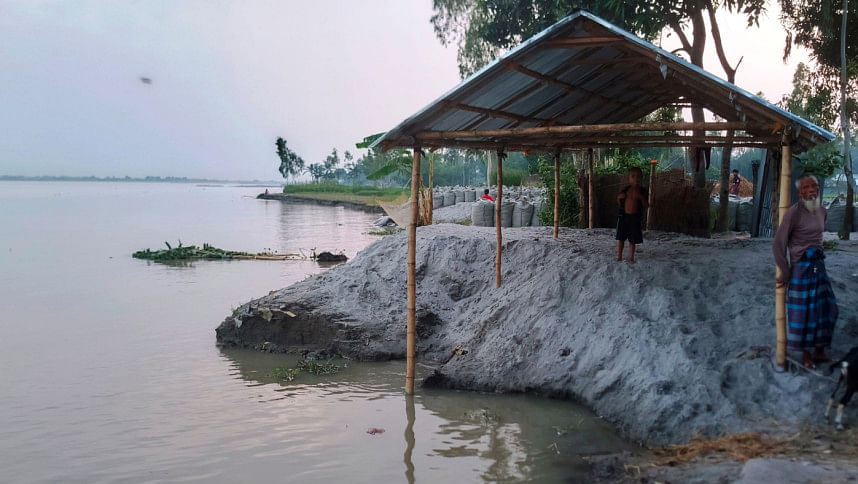Erosion worsens as Teesta water recedes

As floodwaters begin to recede, erosion has hit vast areas along the Teesta shoal in the northern districts of Lalmonirhat, Rangpur, Kurigram, and Gaibandha.
At least 80 locations across these districts have already experienced erosion, sweeping away homesteads, farmlands, and various structures into the river.
According to the Water Development Board, the water level in the Teesta dropped to 20 centimetres below the danger mark of 52.15 metres at the Teesta Barrage point in Lalmonirhat at 9:00am on Tuesday. WDB officials said erosion began as the upstream runoff subsided.
Sekendar Ali, a farmer from the Goribullah area in Lalmonirhat's Aditmari upazila, said the erosion started on Monday night. "It is getting worse by the hour. People are moving their homes to safer places," he said.
Karim Mia, a farmer from Dowabari village in Hatibandha upazila of Lalmonirhat, said, "Although floodwaters have receded, erosion has intensified. Between Monday evening and Tuesday morning, two bighas of my cropland were swallowed by the river. Another four bighas are at risk now."
Moshiur Rahman, chairman of Dowabari Union Parishad, said erosion has been reported at no fewer than 10 points in his union. "Many residents have started relocating their houses. We're preparing lists of the affected families and properties," he said.
Azgor Ali, a day labourer from Bogurapara village in Rajarhat upazila of Kurigram, said his homestead was lost to erosion. "I have taken shelter at a relative's house with my five-member family. The threat of erosion now feels greater than the floods," he said.
Rabiul Islam, executive engineer of the Rangpur Water Development Board, said, "Although the erosion is not yet at a critical level, we are placing sand-filled geo-bags at vulnerable points to prevent further damage."
Shunil Kumar, executive engineer of the Lalmonirhat Water Development Board, said, "The Teesta causes flooding when water rises, and erosion when it falls. Among all districts, Lalmonirhat suffers the most. We're working to protect the risky areas with geo-bags and assessing the extent of losses."

 For all latest news, follow The Daily Star's Google News channel.
For all latest news, follow The Daily Star's Google News channel. 



Comments